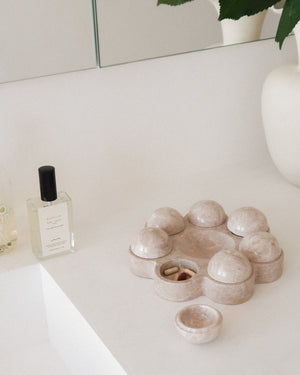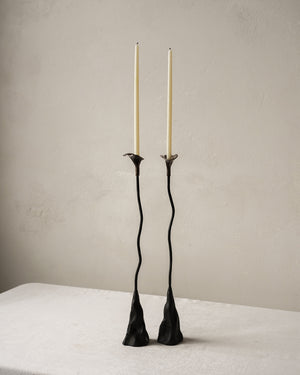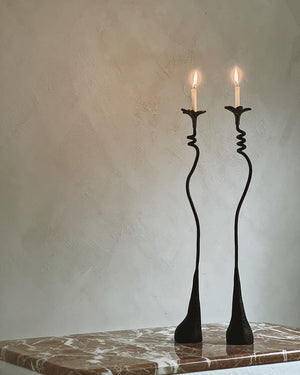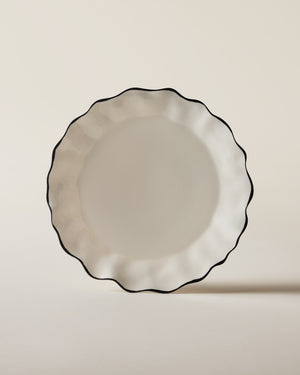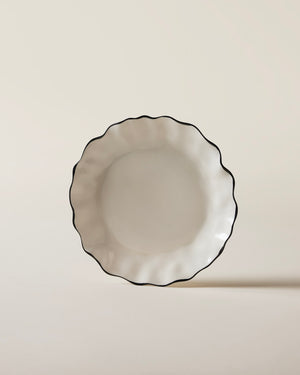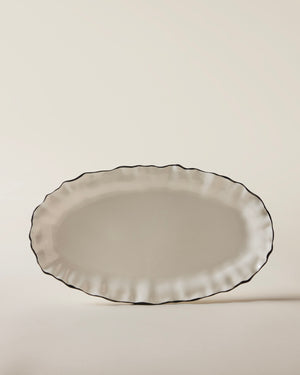BRUTALISM 101

Brutalist Architecture:
Emerging in the mid-20th century, Brutalism gained popularity in the 1960s and 1970s. The word "brutalism" comes from the French words "bréton brut" meaning "raw concrete." Known for a utilitarian feel, Brutalist buildings have a graphic quality and are often institutional buildings. Post-WWII nations worldwide were looking to rebuild, and concrete was affordable. Brutalism lacks a clear set of principles and takes a different form in different regions. In Eastern Europe, the style was associated with socialism and authoritarian power. Still, in warmed post-colonial climates like Brazil, India, and Kenya, Brutalism seemed to assert new freedom with a simultaneous sense of strength and handmade design.
|
"BRUTALISM WAS AN ATTEMPT TO CREATE AN ARCHITECTURAL ETHIC, RATHER THAN AN AESTHETIC. IT HAS LESS TO DO WITH MATERIALS AND MORE TO DO WITH HONESTY: AN UNCOMPROMISING DESIRE TO TELL IT LIKE IT IS. -NIKIL SAVAL, New York Times |
Monument Linden, Krushevo Macedonia. Photo by Jan Kempenaers |

Miodrag Zivkovic's monument to the Battle of Sutjeska
Brutalism fell out of favor in the 1980s due to its cold and austere nature, often associated with totalitarianism. Furthermore, raw concrete does not age well, so many brutalism structures became symbols of urban decay and economic hardships. However, Brutalism is now making a surprising comeback, heralded by an unexpected source: Instagram. Brutalist architecture lends itself perfectly to the social media aesthetic favoring bold, striking visuals. While large-scale brutalism buildings may stay a thing of the past, the aesthetic has embedded itself into our present in a multitude of ways.
|
CHARACTERSITICS:
|
Met Breur, NYC. Photograph by Ezra Stoller |

Geisel Library, San Diego. Photo by Erik Jepsen
|
Beginning No. 9 Richard Baronio |
Napkin Ring No.9 Richard Baronio |
|
Boston City Hall. Photo by Ezra Stroller |
|
|
ARCHITECTS TO KNOW:
|
Paul Rudolph's Borroughs Wellcome. Photo by JP McDonnel
Le Corbusier's Notre Dame du Haut
|
Brutalist Art and Design:
Brutalist art and design differ from Brutalist architecture in many ways. It is more ornate, organic, and uses a multitude of materials. However, what it has in common are strength and rawness. Characterized by a bold and imposing look, brutalist design favors striking geometric lines and distressed materials. You are meant to see the age in vintage brutalist furniture, art, and objects. That is part of the appeal. I love how brutalist art and design's strength and sharp lines pair with soft, curvy organic pieces later became popular. For me, it is always about the mix.

Design by Kelly Wearstler
 Blooming Candle Holder No. 1 Richard Baronio |
 Flourishing Candelabra Richard Baronio |
|
CHARACTERISTICS:
|
 Chandelier by Tom Greene Chandelier by Tom Greene Chairs by Paul Evans Chairs by Paul Evans
|

Paul Evans Console
|
Growing No. 3 Richard Baronio |
Beginning No. 10 Richard Baronio |
|
Cabinet by Paul Evans |
MATERIALS:
|
-
Tom Greene
-
Curtis Jere
-
Paul Evans
-
Adrian Pearsall
 Design by Kelly Wearstler
Design by Kelly Wearstler
 Blooming Candle Holder No. 2 Richard Baronio |
 Evolving Menorah No. 2 Richard Baronio |
